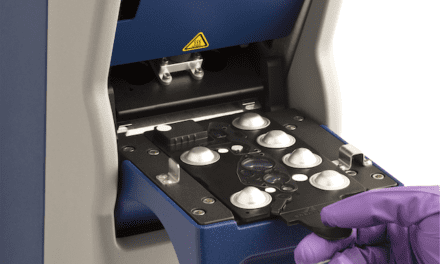Researchers in the department of chemistry at the University of Tokyo have developed an intelligent image-activated cell sorter (IACS) based on an ultrafast digitizer from Spectrum Instrumentation, Grosshansdorf, Germany (Figure 1).
The instrument is the world’s first high-throughput, image-based cell-sorting technology, and is capable of processing cells with unprecedented throughput and accuracy. The technology is highly versatile and is expected to enable machine-based, scientific discovery in biological, pharmaceutical, and medical sciences and, in particular, cancer research, by sorting for the slight differences between cancerous and noncancerous cells.
Cell sorting plays a fundamental role in molecular biology, pathology, immunology, and virology research. It requires the ability to rapidly search through and sort out cells based on their unique chemical features and shapes. Conventional methods are limited in uncovering these differences, are too labor- or time-intensive, or require tradeoffs between speed and accuracy.

Figure 2. The complete IACS system comprises five key sections: suspended cells injected into the IACS are focused by the hydrodynamic focuser into a single stream; imaged by the FDM microscope; analyzed by the real-time intelligent image processor; maintained in a single stream by the acoustic focuser during the computation; and sorted by the dual-membrane push-pull cell sorter triggered by decisions made by the image processor. The entire process is operated in a fully automated and real-time manner.
The IACS uses real-time machine intelligence technology to provide a radically new data management infrastructure, enabling cells to be accurately sorted at an unprecedented rate. The IACS combines high-throughput cell imaging, cell focusing, and cell sorting with a software–hardware data management infrastructure (Figure 2). It utilizes a number of different technologies, including data processing, electronics, mechanics, microfluidics, and optics. The system is flexible and scalable, and also delivers real-time automated operation for data acquisition, data processing, decision-making, and sort actuation. Even when using complex learning algorithms, the complete process is performed in just 32 milliseconds per cell.
A crucial part of the IACS setup is image construction, which uses a frequency-division-multiplexed (FDM) microscope, also developed at the University of Tokyo. The FDM microscope can produce continuous, high-speed, blur-free, sensitive bright-field and two-color fluorescent image acquisitions of cells flowing at 1 meter per second. Such a rate is required to achieve the system’s processing rate of approximately 100 cells per second.
The other key to ultrafast cell sorting is acquiring the signals that come from avalanche photodiodes in the FDM, accomplished by passing the signals to a Spectrum M4i.2212-x8 digitizer card running at a sampling rate of 1.25 gigasamples per second. The acquired data is transferred over the card’s high-speed PCIe bus to a personal computer, where the spatial profiles contained in the digitized waveforms can be separated. The fast PCIe interface of the digitizer allows this process to run continuously with a high event rate. The separation process involves working in the frequency domain, by performing Fourier transforms that reveal each signal’s distinct modulation frequencies.
Once the image construction is complete, the results are transferred via a 10 Gb Ethernet connection to the image analysis and time management stages of the IACS. Then, a field-programmable gate array, three central processing units, a graphics processing unit, and a network switch combine to perform the necessary image processing and decision-making using deep learning techniques on a neural network.
“This is an example of where our ultrafast digitizer cards can play a critical role in enabling image recognition systems to acquire and process images to meet the demands for increasingly faster and more accurate systems,” says Oliver Rovini, chief technology officer at Spectrum Instrumentation. “System designers want to create solutions that process images in real time, and our ultrafast digitizers can make that possible for applications such as this through to factory automation and process control.”
The department of chemistry at the University of Tokyo is part of a large consortium of institutes and organizations from Japan and the United States which have undertaken fundamental research into the development of an intelligent cell search engine.
For further information, visit Spectrum Instrumentation.






